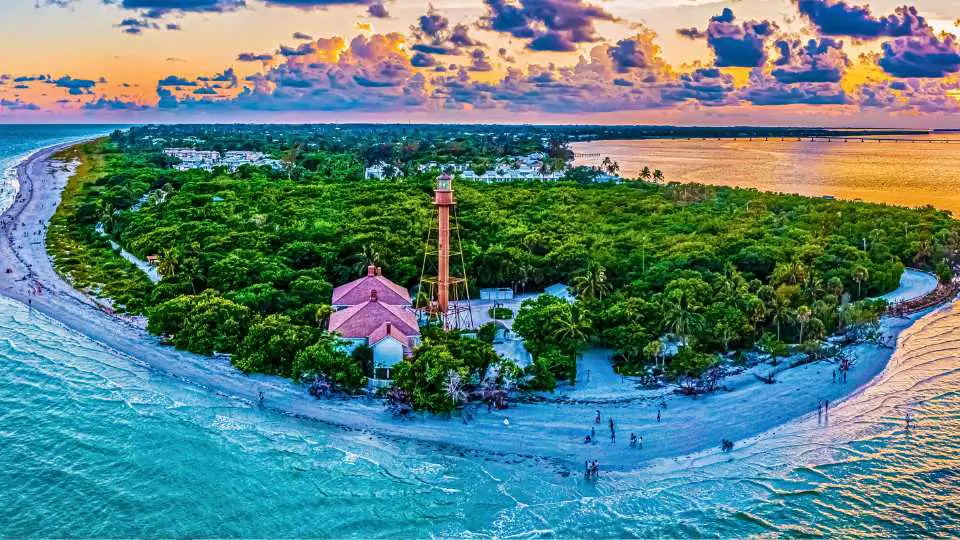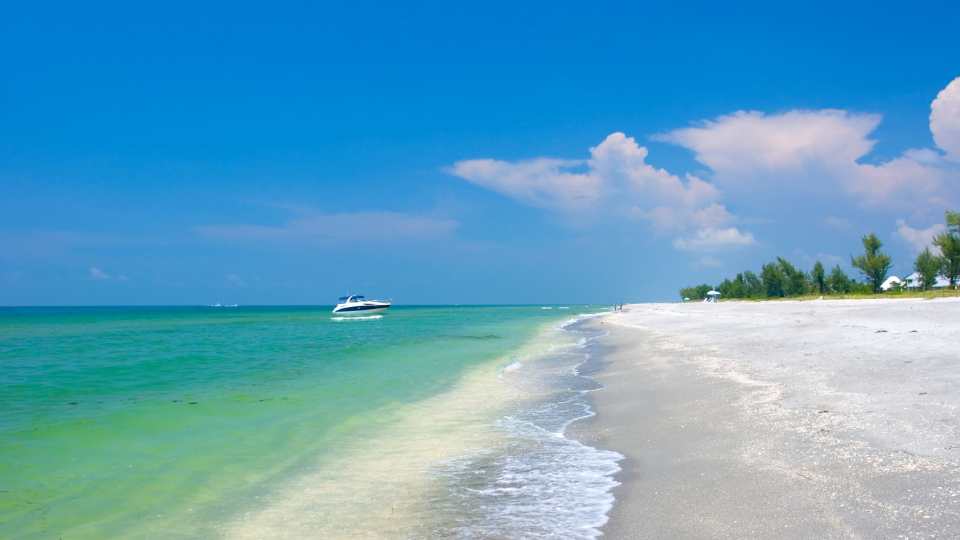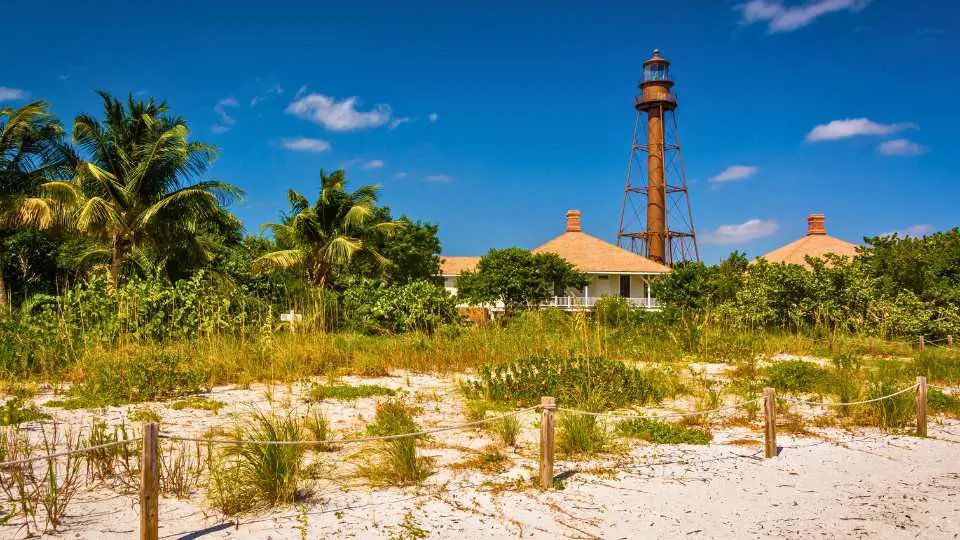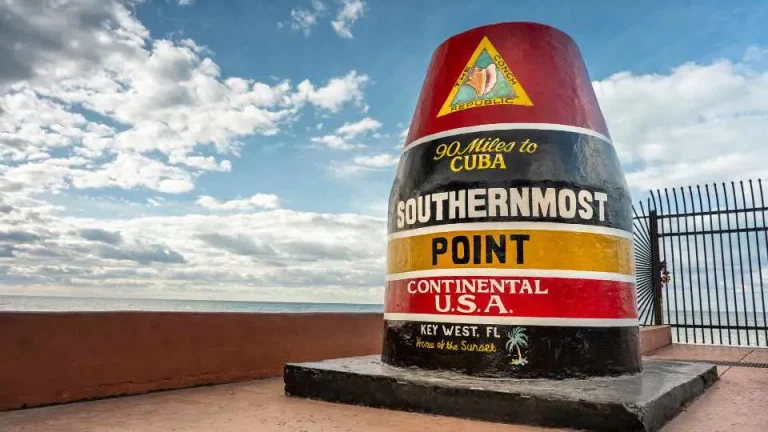Visitors Guide to Sanibel Island, Florida: Essential Tips for Your Coastal Getaway
Sanibel Island, Florida, offers visitors a unique blend of natural beauty and laid-back charm. Located just off the coast of Fort Myers, this barrier island is renowned for its pristine beaches, abundant wildlife, and world-class shelling opportunities. Visitors to Sanibel Island can expect to find 15 miles of unspoiled shoreline, over 250 types of shells, and 22 miles of bike paths to explore.
The island’s most popular attractions include the J.N. “Ding” Darling National Wildlife Refuge, where visitors can spot diverse bird species and other native wildlife. Bowman’s Beach provides a secluded stretch of sand perfect for sunbathing and shelling. The historic Sanibel Lighthouse, standing since 1884, offers picturesque views and a glimpse into the island’s maritime history.
Sanibel Island caters to various accommodation preferences, from cozy cottages to luxurious resorts. Local restaurants serve fresh seafood and island-inspired cuisine. Whether seeking relaxation or adventure, Sanibel Island provides a memorable Florida getaway for nature lovers and beach enthusiasts alike.
Sanibel Island Overview
Sanibel Island is a picturesque barrier island located off the southwest coast of Florida. Known for its stunning beaches, abundant wildlife, and rich history, it offers visitors a unique blend of natural beauty and cultural experiences.
Geography and Climate
Sanibel Island stretches 12 miles long and 3 miles wide at its broadest point. The island’s east-west orientation, unusual for Gulf Coast barrier islands, contributes to its excellent shelling beaches.
Sanibel enjoys a subtropical climate with warm temperatures year-round. Summers are hot and humid, with average highs around 90°F (32°C). Winters are mild and dry, with temperatures rarely dropping below 60°F (16°C).
The island’s ecosystem includes beaches, mangrove swamps, and interior wetlands. These diverse habitats support a wide variety of plant and animal species.
History and Culture
Sanibel’s history dates back thousands of years, with evidence of Calusa Indian settlements. European explorers arrived in the 16th century, followed by Spanish and Cuban fishermen.
The island was officially settled in the late 1800s. Early pioneers established farms and fishing communities. In 1963, a causeway connecting Sanibel to the mainland was built, spurring tourism and development.
Today, Sanibel maintains a strong commitment to preserving its natural and cultural heritage. The island has strict building codes and dedicates over 60% of its land to conservation.
Wildlife and Natural Preserves
Sanibel Island is renowned for its diverse wildlife. The J.N. “Ding” Darling National Wildlife Refuge covers nearly half the island. It provides habitat for over 245 bird species, including roseate spoonbills and white pelicans.
The island’s waters are home to manatees, dolphins, and various fish species. Loggerhead sea turtles nest on Sanibel’s beaches from May to October.
Other notable preserves include the Sanibel-Captiva Conservation Foundation lands and the Bailey Tract. These areas offer hiking trails, birdwatching opportunities, and chances to observe native flora and fauna in their natural habitats.

Planning Your Visit
Proper planning ensures a smooth and enjoyable trip to Sanibel Island. Consider the best time to visit, transportation options, and how to navigate the island efficiently.
Best Time to Visit
Sanibel Island’s subtropical climate offers year-round appeal. Winter (December to April) is peak season, with warm temperatures and low rainfall. Crowds are larger and prices higher during this time.
Summer (May to November) brings hotter, more humid weather and occasional afternoon thunderstorms. Hurricane season peaks from August to October. Spring and fall offer a balance of pleasant weather and fewer tourists. March and April are ideal for shelling enthusiasts, as winter storms wash up a variety of shells.
Wildlife lovers may prefer winter for bird watching or summer for sea turtle nesting season.
Getting to Sanibel Island
Sanibel Island is accessible by car via the Sanibel Causeway from Fort Myers. The causeway includes three bridges and offers scenic views of San Carlos Bay.
For air travelers, Southwest Florida International Airport (RSW) in Fort Myers is the closest major airport, about 45 minutes away. Rental cars are available at the airport. Shuttle services and taxis also operate between the airport and Sanibel Island.
Some hotels offer airport pickup services for guests. Check with your accommodation for this option.
Transportation on the Island
Sanibel Island is bicycle-friendly, with over 25 miles of dedicated bike paths. Many visitors rent bikes to explore the island. Cars are allowed, but speed limits are strictly enforced. Parking can be limited at popular beaches and attractions.
The island has no public transportation system. Taxis and ride-sharing services are available for those without personal vehicles. Renting a golf cart is another popular option for short trips around the island. Many resorts and local companies offer golf cart rentals.
Walking is feasible in some areas, particularly around shops and restaurants in the central part of the island.
Beaches and Outdoor Activities
Sanibel Island offers pristine beaches, world-class shelling, exciting water sports, and scenic trails. Visitors can enjoy a variety of outdoor activities in this tropical paradise.
Popular Beaches
Bowman’s Beach stands out as a favorite among locals and tourists alike. Its wide stretches of white sand provide ample space for sunbathing and beach walks. Lighthouse Beach, located near the historic Sanibel Lighthouse, offers excellent fishing and picturesque views.
Blind Pass Beach, situated between Sanibel and Captiva Islands, is known for its strong currents and excellent shelling opportunities. Gulfside City Park Beach, also called Algiers Beach, provides a more secluded experience with amenities like picnic areas and restrooms.
Tarpon Bay Beach offers calm waters ideal for families with young children. Each beach on Sanibel Island has its own unique character, ensuring visitors can find the perfect spot to relax or explore.
Shelling
Sanibel Island is renowned worldwide for its exceptional shelling. The east-west orientation of the island acts as a natural scoop, collecting a wide variety of shells from the Gulf of Mexico.
Popular shelling spots include Blind Pass Beach, Bowman’s Beach, and Lighthouse Beach. Early morning and low tide offer the best conditions for finding prized specimens.
Common shells found on Sanibel include:
- Junonia
- Lightning Whelk
- Alphabet Cone
- Florida Fighting Conch
- Tulip Shell
Remember to follow the island’s shelling guidelines: take only empty shells and leave live shells in their natural habitat. The Bailey-Matthews National Shell Museum offers exhibits and educational programs for shell enthusiasts.
Water Sports
Sanibel Island’s clear waters and gentle waves provide ideal conditions for various water sports. Kayaking and paddleboarding are popular activities, with numerous rental shops and guided tours available.
J.N. “Ding” Darling National Wildlife Refuge offers kayak trails through mangrove forests, allowing visitors to observe diverse wildlife up close. For those seeking more excitement, jet ski rentals and parasailing adventures are available at several beaches.
Fishing enthusiasts can enjoy both deep-sea fishing charters and inshore fishing experiences. Popular catches include snook, redfish, and tarpon. Many local guides offer fishing trips tailored to both beginners and experienced anglers.
Hiking and Biking Trails
Sanibel Island boasts an extensive network of hiking and biking trails, perfect for exploring the island’s natural beauty. The island features over 25 miles of paved bike paths, making it easy to cycle between beaches, shops, and restaurants.
J.N. “Ding” Darling National Wildlife Refuge offers several hiking trails:
- Indigo Trail (4 miles)
- Wulfert Keys Trail (0.4 miles)
- Shell Mound Trail (0.4 miles)
These trails provide opportunities to observe native wildlife, including alligators, roseate spoonbills, and various wading birds. The Bailey Tract, part of the refuge, offers additional hiking options through freshwater marshes and hardwood hammocks.
Sanibel-Captiva Conservation Foundation maintains nature trails open to the public, including the Shipley Trail and the Bob Wigley Preserve Trail. These paths showcase the island’s diverse ecosystems and native plant species.

Dining and Shopping
Sanibel Island offers a diverse culinary scene and unique shopping experiences. Visitors can savor fresh seafood, explore charming boutiques, and discover local art galleries.
Local Cuisine
Sanibel’s restaurants showcase the island’s coastal flavors. Fresh seafood dominates menus, with grouper, snapper, and stone crab claws as local favorites. Many eateries feature outdoor seating with stunning Gulf views.
Island Cow serves up casual fare in a fun, beachy atmosphere. Their extensive menu includes seafood, burgers, and tropical drinks. For a taste of Old Florida, head to Gramma Dot’s Seaside Saloon at the Sanibel Marina.
Pinocchio’s Original Italian Ice Cream is a must-visit for dessert lovers. Their homemade ice cream comes in unique flavors like Sanibel Krunch and Dirty Sand Dollar.
Fine Dining
For upscale dining experiences, Sanibel offers several noteworthy options. Il Cielo combines Italian and American cuisines in an elegant setting. Their menu changes seasonally to highlight fresh, local ingredients.
Mad Hatter Restaurant provides romantic waterfront dining. Known for its innovative seafood dishes, it’s a popular spot for special occasions. Reservations are recommended, especially during peak season.
Traders Gulf Coast Grill & Gifts offers a unique dining and shopping combination. Enjoy their fresh seafood and steaks, then browse their attached gift shop for island souvenirs.
Shops and Boutiques
Sanibel’s shopping scene is dominated by small, independently-owned boutiques. Periwinkle Place, an open-air shopping center, houses over 25 shops selling clothing, gifts, and island-themed decor.
She Sells Sea Shells offers an extensive collection of seashells and shell-inspired gifts. It’s a perfect spot to find a memento from Sanibel’s famous beaches.
Bailey’s General Store, a Sanibel institution since 1899, provides groceries, beach supplies, and unique gifts. It’s an ideal stop for vacation essentials and local products.
Art Galleries
Sanibel’s artistic community is showcased in numerous galleries across the island. Tower Gallery, a cooperative of local artists, displays a variety of mediums including paintings, sculptures, and jewelry.
Hirdie-Girdie Gallery features works from over 40 artists, with styles ranging from traditional to contemporary. Many pieces reflect Sanibel’s natural beauty and wildlife.
Luc Century Glass Studio offers visitors a chance to watch glassblowing demonstrations. The gallery sells unique glass creations, including Sanibel-inspired ornaments and sculptures.
Arts and Entertainment
Sanibel Island offers a vibrant arts scene and exciting entertainment options. Visitors can enjoy live performances, cultural events, and seasonal festivals that showcase local talent and island traditions.
Theater and Live Music
The BIG ARTS Strauss Theater presents a diverse lineup of plays and musicals throughout the year. This intimate venue hosts both professional and community productions, providing entertainment for all ages. Live music enthusiasts can find performances at several island bars and restaurants. The Island Cow often features acoustic musicians, while George & Wendy’s Sanibel Seafood Grille hosts local bands on weekends.
For a unique experience, check out the Sanibel Music Festival held annually in March. This event brings world-class chamber music performances to the island, attracting classical music lovers from far and wide.
Festivals and Events
Sanibel Island hosts numerous festivals and events that celebrate art, culture, and nature. The Sanibel Shell Festival, held in March, is a must-visit for shell enthusiasts. This three-day event showcases intricate shell art and rare specimens from around the world.
Art lovers shouldn’t miss the Sanibel-Captiva Art League’s plein air painting events. These outdoor painting sessions occur throughout the year, allowing visitors to watch artists capture the island’s beauty on canvas.
The annual “Ding” Darling Days, typically held in October, offers wildlife-themed activities, lectures, and tours at the J.N. “Ding” Darling National Wildlife Refuge. This event combines education and entertainment, perfect for nature enthusiasts of all ages.

Conservation and Community
Sanibel Island stands out for its strong commitment to environmental protection and community engagement. Residents and visitors alike participate in various initiatives to preserve the island’s unique ecosystems and wildlife.
Wildlife Protection Initiatives
The Sanibel-Captiva Conservation Foundation (SCCF) leads efforts to safeguard local wildlife. SCCF monitors sea turtle nesting sites, protecting eggs and hatchlings during nesting season. They also conduct regular beach cleanups to remove harmful debris.
The J.N. “Ding” Darling National Wildlife Refuge serves as a crucial habitat for migratory birds and endangered species. Visitors can observe alligators, roseate spoonbills, and other native wildlife in their natural environment.
Local ordinances restrict building heights and prohibit streetlights to protect nesting sea turtles and migratory birds. These measures help maintain the island’s natural beauty and biodiversity.
Eco Tours and Education
Sanibel Island offers numerous eco-friendly tours and educational programs. Kayak tours through mangrove tunnels provide intimate encounters with local marine life. Trained guides share insights about the island’s delicate ecosystem.
The Bailey-Matthews National Shell Museum educates visitors about mollusks and their importance to the marine environment. Interactive exhibits and beach walks offer hands-on learning experiences for all ages.
SCCF’s Nature Center hosts regular lectures and workshops on topics like water quality and native plant conservation. These programs foster understanding and appreciation for Sanibel’s unique natural resources.
Local schools incorporate environmental education into their curricula, ensuring future generations continue the island’s conservation legacy.






